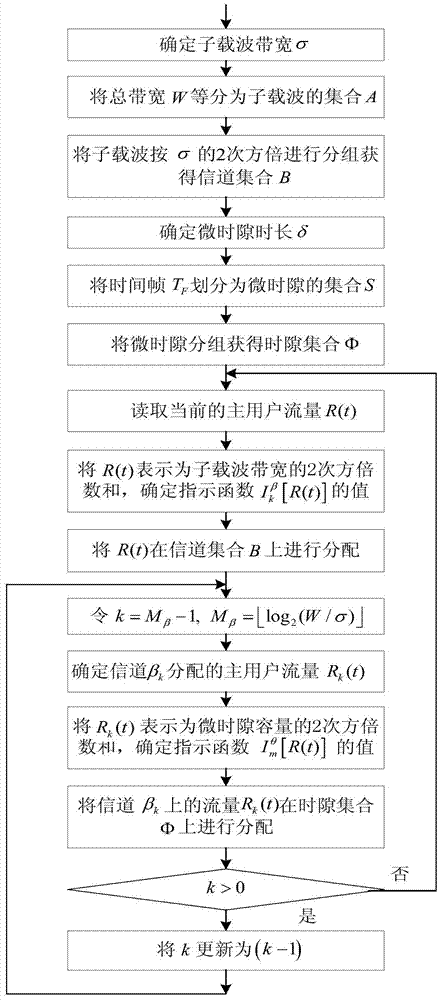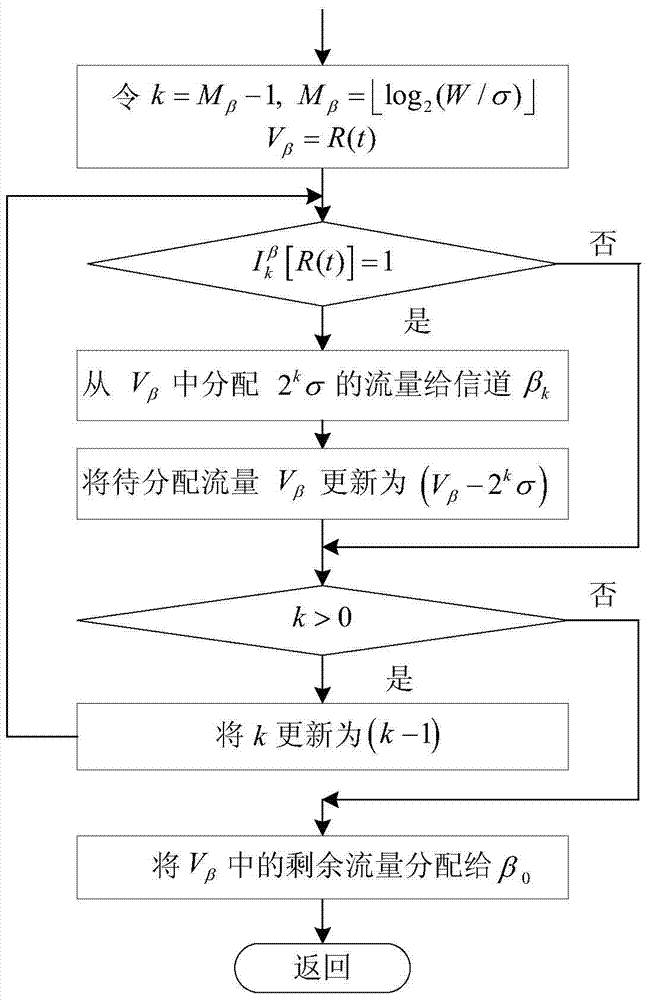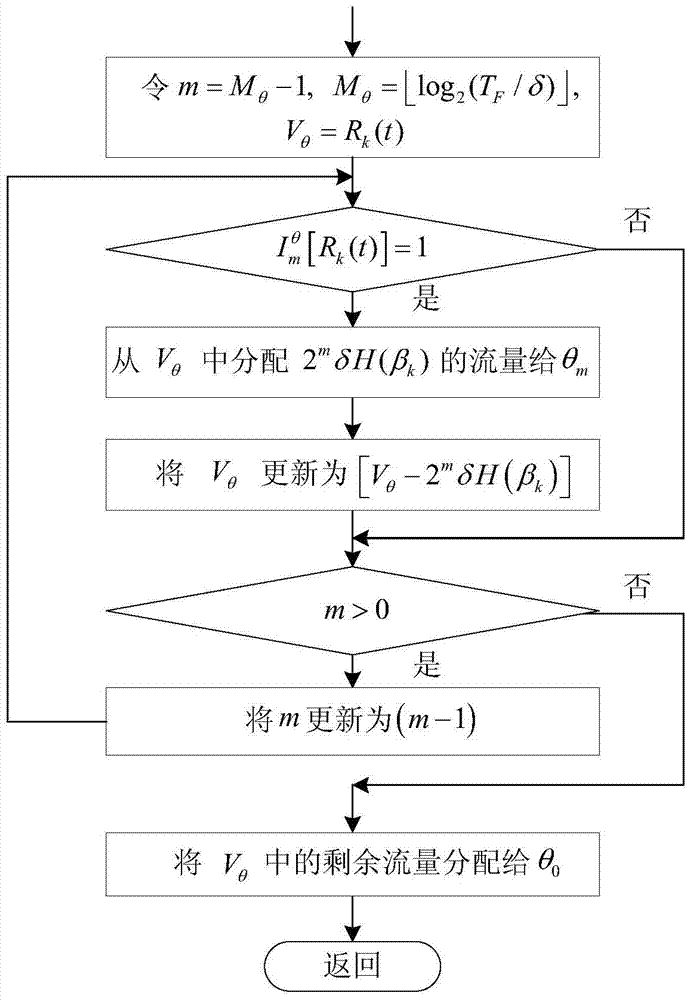An OFDM time-frequency resource allocation method
An allocation method and technology of time-frequency resources, applied in the field of network communication, can solve problems such as difficulty in obtaining perceptual effects, inability to ensure high resource utilization, lack of resources, etc.
- Summary
- Abstract
- Description
- Claims
- Application Information
AI Technical Summary
Problems solved by technology
Method used
Image
Examples
Embodiment
[0074] Such as figure 1 As shown, a method for allocating OFDM time-frequency resources includes the following steps:
[0075] S1 Set the available total bandwidth W of the PU (Primary User, PU) in the current CRN (Cognitive Radio Networks, CRN) to 7.5 Mbps, and determine the optimal subcarrier bandwidth according to the premise of the cognitive wireless network processing capability:
[0076]
[0077] where M β is a positive integer.
[0078] Obviously, choosing a larger M β Smaller σ and more subcarriers can be obtained, the traffic resolution can be refined, and the waste of frequency band resources in the process of traffic allocation can be reduced. However, more subcarriers will cause the peak-to-average power ratio (PAPR) of the subcarrier superimposition at the OFDM receiving end to be too high, resulting in overload due to nonlinearity and out-of-band radiation (out- of-band radiation) and other problems, reducing the application efficiency of the device.
[0...
PUM
 Login to View More
Login to View More Abstract
Description
Claims
Application Information
 Login to View More
Login to View More - R&D
- Intellectual Property
- Life Sciences
- Materials
- Tech Scout
- Unparalleled Data Quality
- Higher Quality Content
- 60% Fewer Hallucinations
Browse by: Latest US Patents, China's latest patents, Technical Efficacy Thesaurus, Application Domain, Technology Topic, Popular Technical Reports.
© 2025 PatSnap. All rights reserved.Legal|Privacy policy|Modern Slavery Act Transparency Statement|Sitemap|About US| Contact US: help@patsnap.com



